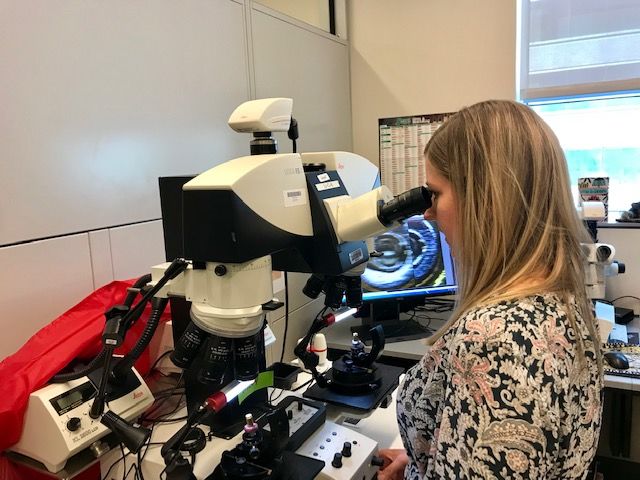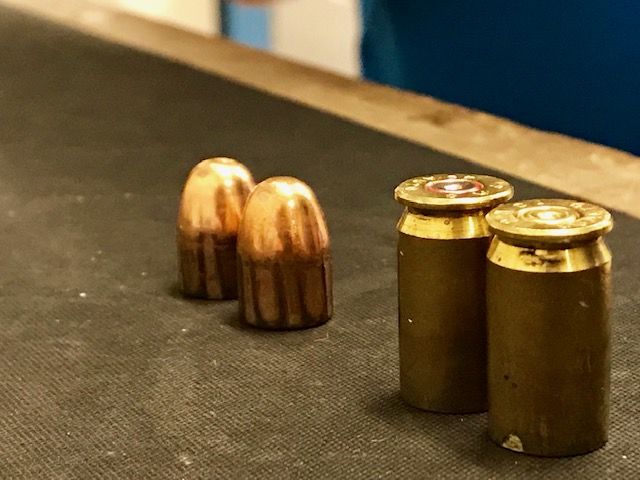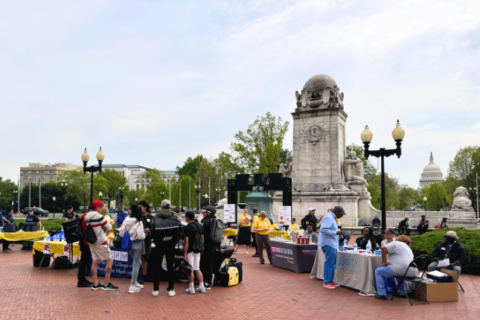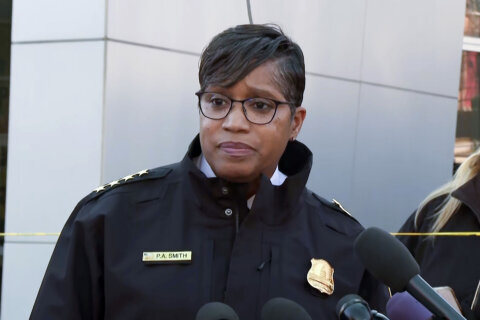D.C. is increasing its investment in public safety, announcing additional funding for ballistics testing at the city’s forensics lab to connect bullet casings from shooting scenes to the person who fired the gun.
Inside D.C.’s Consolidated Forensics Lab on Tuesday, a lab tech test-fires a gun. The bullet spins through the chamber, exiting with a unique ballistic pattern on the casing that is specific to that firearm.

“Every shell casing that we find, whether it’s related to a shooting or not, helps us find a shooter,” D.C. Mayor Muriel Bowser said.
The Criminal Gun Information Center was initiated in D.C. police’s Seventh District in 2018. Bowser announced additional funding will allow it to expand to include the city’s Sixth District.
CGIC is collaboration focused on the immediate collection, management, and analysis of crime gun evidence, such as shell casings, in real-time, in an effort to identify shooters, disrupt criminal activity, and to prevent future violence. It relies on an ongoing collaboration between D.C. police, the U.S. Attorney’s Office, and federal law enforcement agencies.
“These investments will help us close cases more quickly and ensure investigators have the evidence and data they need to hold criminals responsible for gun-related crimes,” Bowser said.

D.C.’s firearms examination unit receives all firearms collected in the city and uses the National Integrated Ballistic Information Network, or NIBIN, to help generate leads in shooting-related investigations.
With more funding and the hiring of four additional analysts who can input their findings into NIBIN, the regional ballistics database, more crimes will be connected and solved, said Dr. Jenifer Smith, director of the D.C.’s forensics department.
“We’re now able to see the firearms. Even though we haven’t recovered some of them, we’re able to see how they’re being used around the city. Now, if a firearm is recovered, and we do a test-fire, we’re actually able to connect these to more scenes,” Smith said.
In the last week, three D.C. police officers have been the victims of targeted shootings. All have survived, but Assistant D.C. Police Chief Robert Contee said increasing the reach of the ballistics tool that could help them solve crimes against residents could also lead to suspects in the police officers’ shootings.
“Again as much as this effort will help us to close violent crimes, any crimes committed against a police officer as well, we look forward to this being another tool in our toolbox to help close those types of cases, as well,” Contee said.
“We as a community are going to do what we can to get these guns off the street and find the people who are so wantonly willing to shoot off firearms,” Bowser said in reference to the recent spate of police shootings.
D.C. started using a regional ballistics database in 2018 and is now expanding its implementation to a second ward, with the hopes of benefiting the entire city with its findings.









